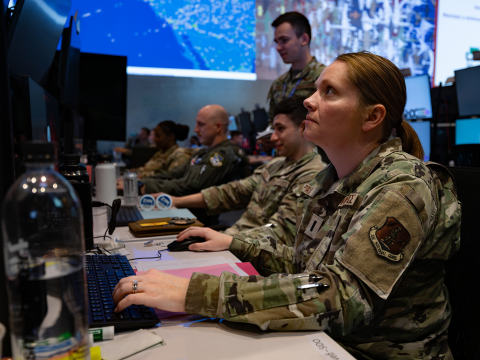Tsunami Short-Circuits Military Communications in Japan and South Korea
U.S. Marines will not leave landlines behind.
For three days following the earthquake and tsunami disaster in Japan, hardwired telephones offered the only lines of communications between the U.S. military and its forces in Japan and South Korea, according to military officials at the Next-Generation Mobile Technologies Symposium in Washington, D.C., on March 17. In fact, because landline telephones have proven so reliable in times of disaster, the U.S. Marine Corps will not convert entirely to Internet protocol-based communications, said Brig. Gen. Kevin Nally, USMC, chief information officer for the Marine Corps.
“The earthquake and tsunami that happened in Japan were very unfortunate, but I’d like to emphasize for our Marines on mainland Japan and Okinawa, the only way we were able to communicate with them for about 72 hours was through analogue—plain old telephone. So, the Marine Corps’ view is that we’re not going to move everything to an [Internet protocol] environment for that very same reason,” Gen. Nally said.
Lt. Gen. William Lord, USAF, chief information officer for the Air Force, added that the earthquake itself damaged a handful of undersea cables, adversely affecting communications with U.S. forces in both Japan and South Korea. “When the earthquake went off, there were eight undersea cables that were affected, which brought Japan down to about three percent commercial connectivity. What maybe you didn’t know is that most of those cables also service Korea, so we were not only out of sorts in Japan but out of sorts in Korea also,” Gen. Lord revealed. “Pacific Command is concerned about our ability to continue to provide intelligence, surveillance and reconnaissance data that they’re used to getting through the forces in the south, but we’re working through all that and at the same time providing humanitarian support to our friends and allies, the Japanese.”
Lord added that within days, the Defense Information Systems Agency was able to use technologies provided by industry to restore almost 95 percent of services to the forces in South Korea and about 75 percent to forces in Japan. To do that the military had to “throttle back” on the use of some recreational websites to ensure the availability of the necessary bandwidth.
Notwithstanding the reliability of landlines, officials predicted a bright future for wireless devices in the military. Gen. Nally reported that despite initial misgivings, he approved the use of tablet devices in aircraft cockpits for pilots in Afghanistan. The pilots, he said, used devices such as the Apple iPad and the Amazon Kindle to download unclassified maps rather than carrying briefcases full of paper maps. Now, pilots are using smaller devices that they Velcro to their thighs for easy access. The devices are not allowed to be connected to the military network, however.
“The future of computing is in mobility. Mobile devices bridge a gap between traditional desktop and cellular phones, enabling users access to multiple capabilities and applications in one device,” said Gen. Nally. He added, however, that the recent tragedy in Japan proves analogue telephones are still needed. If the military relies entirely on Internet protocol networking and that capability gets taken out, “you’re done,” he said.



Comments